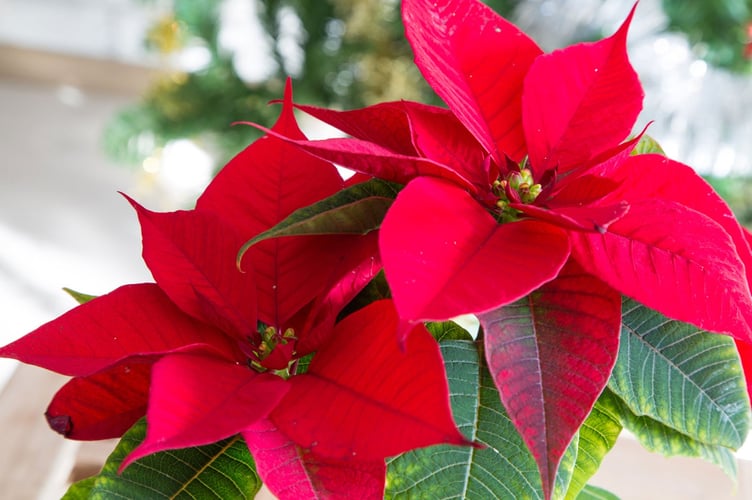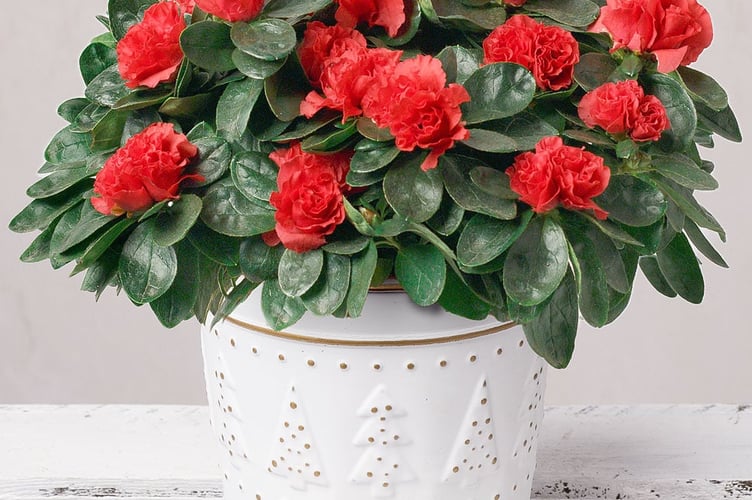THINK of plants for the festive season and we invariably come up with holly wreaths, poinsettias and of course Christmas trees. But in fact there are many other plants which will brighten up your Christmas and cheer up the garden and home with colour and scent.
Some of the plants which will get you in festive mood may well be in your garden already, and if not it’s time to plan for them to be in place when Christmas comes around next year. Many of these plants also make super presents for green-fingered friends or family members.
It wouldn’t be Christmas without the bright berries of holly, but sadly many of the bushes in our gardens don’t produce them. That’s because holly is what’s called dioecious, which means that both male and female plants need to be close together in order for the female plant to produce seeds, which is what berries are.
So if you want to produce holly with berries for future Christmases, make sure you get plants of both sexes from a specialist nursery.
Indoors, flowering plants can be used in festive displays and table decorations while outside, plants in pots and raised beds, can be draped with decorations or even fairy lights, to make a brave show whatever the weather.
So here are just few of the plants which will help boost the festive mood this Christmas

Top of the list has to be the poinsettia, with its pointed red bracts and rich red and green leaves, named after a 19th century American politician Joel R Poinsett. They hate the cold and should be kept at around 15C and also out of direct sunlight. Let them almost dry out between waterings.
While red is the most popular colour, poinsettias are also available in pink, orange, cream and white.
Another top yuletide favourite is cyclamen which comes in red, purple, pink and white. It will flower for up to eight weeks and thrives in cooler temperatures. When buying, choose plants with a few open flowers and plenty of buds. Keep out of direct sun and make sure the compost remains moist but not too wet.
Often overlooked, the bright colours and big showy blooms of azaleas make them ideal for Christmas indoor planting displays. They come in pink, red, purple, orange, yellow and white and thrive in cool conditions but need frequent watering. Pick off faded flowers.
With masses of bright flowers ranging from pink and purple to red and white, a Christmas cactus is guaranteed to raise the spirits however dreary the winter weather. Easy to grow, these plants can live for many years if not overwatered.
Another popular festive flower is the Christmas rose with deep green foliage and delicate white blooms but which, in fact, is not a rose at all but a member of the buttercup family. It will grow happily in a pot or window-box during the winter before being planted in the garden in spring when bees appreciate the nectar-rich flowers.
Amaryllis, with huge exotic flowers sprouting from large bulbs, are a popular Christmas gift and are so quick to develop you can almost see them grow. They come in several bright colours and bloom from four to six weeks after planting.
With a bit of luck they will bloom for another year if you allow the leaves to die back after flowering and let the bulb go dormant for the summer before repotting and watering in the autumn.
In our neck of the woods, camellias can sometimes come into flower at Christmas to provide a lovely festive outdoor display. They prefer sunny sheltered sites and lime-free soil. Grown in containers, they need ericaceous potting compost. Plants should be kept moist during the summer, which is when flower buds start to form.
And what about an orchid for Christmas? Moth orchids are one of the easiest orchids to grow and provide elegant long-lasting blooms in white, pink, purple and yellow. Indoors they need gentle, constant heat of around 16C away from radiators and draughts and, with luck, will reward you with a fine show of festive flowers for several Christmases to come.

JUST THE JOB
What to do in West Somerset gardens in December
The dark days of December can be brightened by some cheery flowering shrubs like the winter viburnums, jasmines and irises. If you don’t have any of these varieties, now is the time to plant some in readiness for next year. Container plants will “take” quite readily if soil conditions are fair.
WEEDS
In West Somerset’s mild climate, weeds like groundsel, chickweed and ground ivy will continue to flower, so get them out and onto the compost heap before they have chance to set seed. It’s worth covering the compost heap with polythene, old carpet or galvanised sheeting to help insulation and to keep out the rain.
PRUNING
Cut back summer side-shoots on wisteria to two or three buds and prune climbing roses, tying in any new shoots. Cut out dead, damaged and diseased branches and shoots from established trained apple trees. Prune grape vines.
Don’t prune plums, cherries and other stone fruits. They should be left until the summer to prevent silver leaf fungus.
GREENHOUSE
Wash the glass, floor and staging with horticultural disinfectant to kill any over-wintering pests and diseases. Ventilate on warmer days to reduce humidity and the risk of disease. Water plants sparingly to maintain as dry an atmosphere as possible.
Propagate perennials from root cuttings, including phlox, oriental poppies and mint.
Insulate outdoor taps or turn them off at the mains.
SPADEWORK
Digging vacant ground should be completed before the worst of the weather sets in but don’t do any spadework in frosty conditions - you will be burying frozen soil which will take an age to warm up in the spring.
.jpeg?width=752&height=500&crop=752:500)




Comments
This article has no comments yet. Be the first to leave a comment.